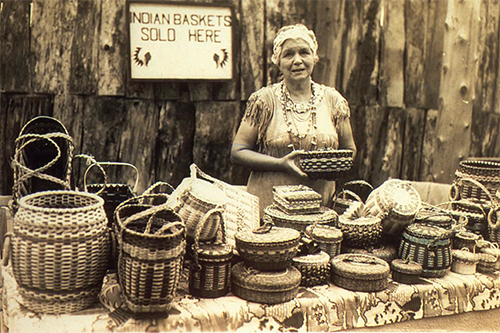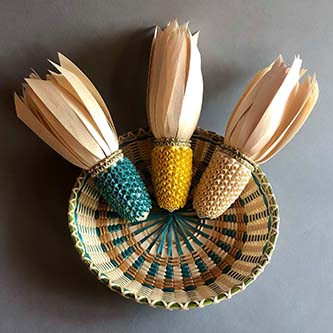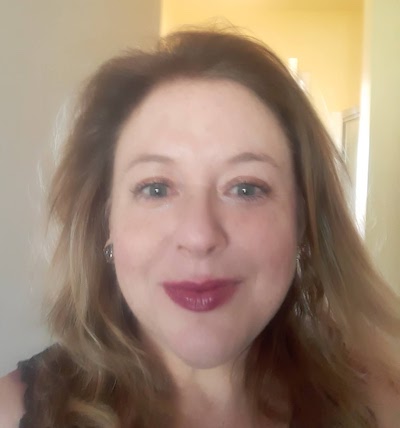
- Details
- By Tamara Ikenberg
Bar Harbor, Maine –– The annual Native American Festival and Basketmakers Market is the premier event for showcasing and buying the signature sweetgrass and ash wood baskets of the Wabanaki people: the Maliseet, Mi’kmaq, Passamaquoddy and Penobscot.
“Basketry is the number one cultural art that has kept the economy going for our tribes,” said Christopher Newell (Passamaquoddy), executive director and senior partner to Wabanaki Nations at the Abbe Museum in Bar Harbor, where the festival is held each year. “The Native American Festival is known for the basketmakers.”
But for the first time in its 27-year history the festival is going completely virtual, allowing viewers to safely interact with artists while COVID-19 restrictions remain in place. The interactive event, now dubbed the Digital NAF, will feature jewelry, sculpture, beadwork and more regional Native art forms, and is set to take place on Saturday, July 11, from 2 p.m. to 4 p.m.
Presented by the Maine Indian Basketmakers Alliance and The Abbe Museum, Digital NAF can be viewed on three platforms: Zoom, the Abbe Museum’s YouTube channel and Facebook Live––more information can be found on the event’s Facebook page.
All signs point to a successful digital debut for the festival.
The Abbe Museum, which focuses on the art, history and culture of the Wabanaki, has already met the coronavirus-era challenge of organizing and then quickly transforming Indigenous art festivals intended to be held outdoors into online-only affairs.
On May 16, the Abbe organized the Digital Abbe Museum Indian Market, an event that prompted The New York Times to call the museum the “unwitting virtual pioneer” of digital markets after making the difficult decision to pivot to a digital space in order to hold the event during the pandemic.
Digital NAF will follow the same format as its predecessor, with artists broadcasting from their homes, where they’ve set up display booths just like they would at an outdoor market.
About a half dozen basketmakers will also take part in live Q and A sessions and presentations during the event.
Their booths will be filled with baskets predominantly made of ash wood or sweetgrass in shapes ranging from barrels, to urns, to glove boxes, to various forms of Native American nourishment like acorns, berries and corn.
“The baskets I have right now are fun,” said Penobscot basketmaker Theresa Secord, an N.E.A. National Heritage fellow and former director of the Maine Indian Basketmakers Alliance. “It’s an Indigenous heirloom corn series woven all with ash wood, even the husks.”
 This basket from Penobscot weaver Theresa Secord's indigenous heirloom corn series features Hopi Blue and Calais Flint corns. It will be available for purchase at The Digital Native American Festival and Basket Maker’s Market on Saturday, July 11. (Theresa Secord)Secord's series represents Hopi Blue Corn from the Southwest, as well as two ancient species known as Calais Flint and Abenaki Rose, which are being revived in Maine, she said.
This basket from Penobscot weaver Theresa Secord's indigenous heirloom corn series features Hopi Blue and Calais Flint corns. It will be available for purchase at The Digital Native American Festival and Basket Maker’s Market on Saturday, July 11. (Theresa Secord)Secord's series represents Hopi Blue Corn from the Southwest, as well as two ancient species known as Calais Flint and Abenaki Rose, which are being revived in Maine, she said.
Secord, 62, started basketmaking 32 years ago under the mentorship of the late Madeline Tomer Shay of Indian Island, Maine.
Split ash wood is a main material in Secord’s basket work, and in Wabanaki basketry in general. She prefers purchasing it from a Mi'kmaw friend as opposed to harvesting and splitting it herself.
“It’s too hard to cut down a tree,” Secord said.
Cutting down either a brown or black ash tree is just the beginning of the arduous process of preparing ash wood for weaving.
According to Newell, once the tree is down, the harvester, or processor, pounds a tool like a sledgehammer or the blunt side of an axe down the length of a log, which causes the layers of bark to start separating. This splitting process continues until the wood is practically paper-thin.
“That’s how the [basketmakers] are able to get such detail,” Newell said. Split ash, he added, “Is super strong. It’s durable. It’s a technology that’s been around hundreds of years that has been developed and perfected, and not just by Wabanaki artists. In Maine it’s especially known.”
Wabanaki basket making is going strong in the state, thanks in part to the efforts of the Maine Indian Basketmakers’ Alliance (MIBA), a non-profit formed in 1993 with the mission of ushering in a new generation of basketmakers through mentorship and apprenticeship programs.
Secord, who is a founding member of MIBA, said at the time the group was formed, the median age of Wabanaki basket weavers was 63. Now, because of MIBA’s support and revitalization efforts, the median age is closer to 40. She added that the group started with 55 basketmakers, and today there are about 150.
One of the weavers heavily credited with spurring the Wabanaki basketry revival passed away in June. The tight knit basket weaving community in Maine is honoring the memory of Passamaquoddy Elder Molly Neptune Parker, the longest-serving president of MIBA.
“Molly represents nearly the last of the generation who taught selflessly to keep the tradition alive,” Secord said. “Most in her generation who helped us found the organization are now gone, but the work and our ancient basketry goes on.”
More Stories Like This
Watermark Art Center to Host “Minwaajimowinan — Good Stories” ExhibitionMuseums Alaska Awards More Than $200,000 to 12 Cultural Organizations Statewide
Zuni Youth Enrichment Project Takes Top Emerging Artist Apprentices to Phoenix for Artistic Exploration and Cultural Immersion
From Dishwasher to Award-Winning Chef: Laguna Pueblo's Josh Aragon Serves Up Albuquerque's Best Green Chile Stew
Rob Reiner's Final Work as Producer Appears to Address MMIP Crisis
Help us defend tribal sovereignty.
At Native News Online, our mission is rooted in telling the stories that strengthen sovereignty and uplift Indigenous voices — not just at year’s end, but every single day.
Because of your generosity last year, we were able to keep our reporters on the ground in tribal communities, at national gatherings and in the halls of Congress — covering the issues that matter most to Indian Country: sovereignty, culture, education, health and economic opportunity.
That support sustained us through a tough year in 2025. Now, as we look to the year ahead, we need your help right now to ensure warrior journalism remains strong — reporting that defends tribal sovereignty, amplifies Native truth, and holds power accountable.
 The stakes couldn't be higher. Your support keeps Native voices heard, Native stories told and Native sovereignty defended.
The stakes couldn't be higher. Your support keeps Native voices heard, Native stories told and Native sovereignty defended.
Stand with Warrior Journalism today.
Levi Rickert (Potawatomi), Editor & Publisher

